Updated by wolfnipplechips 29 March 2012
Guide to bugs you might find in your crabitat
Insects
Insects have six legs and three body parts that are usually clearly visible, the head, the thorax (the breast) and the abdomen. Most of them have wings, although those might not be clearly visible, some insects can hide them in a sort of pouch on their back (like earwigs) and some insects have no wings at all. The vast majority of insects that you might find in your crabitat are beneficial, harmless or a nuisance at most. Usually you can get rid of them by doing a deep clean.
Common insects are:
Booklice aka Paperlice
Very often described as walking grains of sand, booklice are tiny and usually white to grey in colour. They are often hard to get rid of, probably because they can live in the rest of the house, too and quickly return to the crabitat where they find ideal conditions. They are harmless and even beneficial because they feed on mold and fungi.
Interesting fact: there are no male booklice, the females “clone” themselves, they are all more or less genetically identical.
http://ento.psu.edu/extension/factsheets/booklice
http://www.asktheexterminator.com/Lice/Booklice.shtml
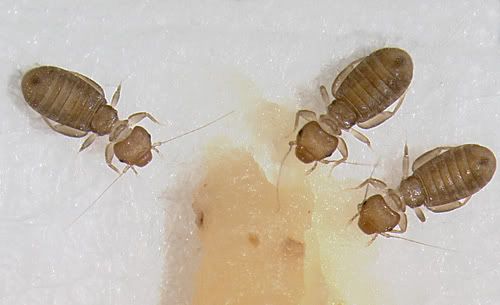
Springtails
Springtails are white, brown, green red, yellow or grey and very small, no bigger than 1/8 inch. They can hurl themselves in the air with a forklike tail they hold under their body, but they have no wings. Springtails are often found in flower pots and they need a humid atmosphere to survive, so the crabitat is ideal for them. They are beneficial because they will feed on crab poop, leftover food and other decaying material, they are excellent cleaners.
Interesting fact: Springtails are among the oldest insect species, they have been around for at least 400 million years.
http://www.collembola.org/
http://www.youtube.com/watch?v=OwOL-MHcQ1w
http://www.youtube.com/watch?v=Yj-_8LGLTcM
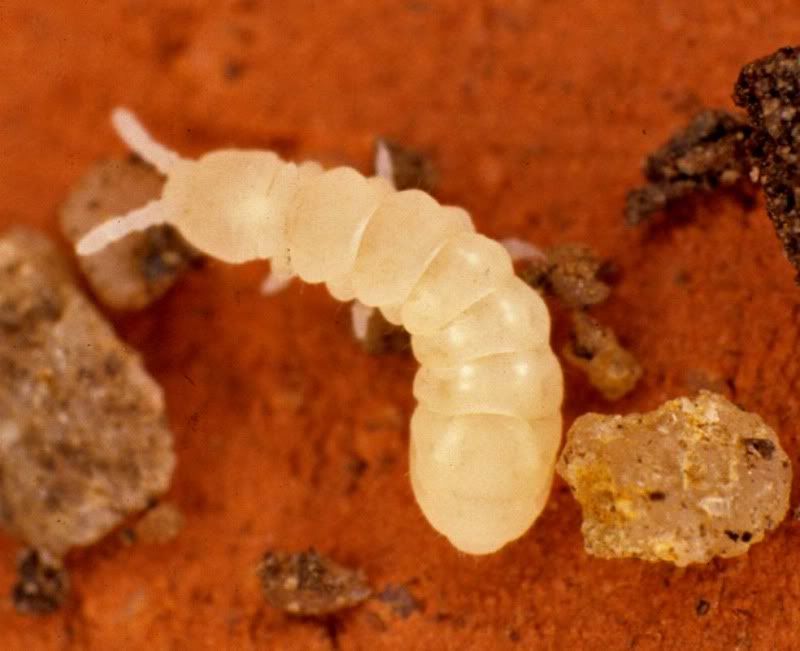

Fruit flies or Drosophila
You probably know them, these are the flies that turn up whenever a piece of fruit is left for too long. The most common species is Drosophila melanogaster, around 2 mm in size, usually red eyes and a brownish colour (other species are a bit bigger or smaller, up to 4 mm). They feed on decaying fruit and breed rapidly (two weeks between generations) and can become a nuisance in the crabitat, although they are not harmful. To get rid of them, place a glass with wine, beer or fruit juice mixed with vinegar and a drop of dish liquid next to the crabitat, the flies will drown in the liquid. It’s best to stop feeding fruit for that time so that the larvae won’t find any food.
Interesting fact: Fruit flies mutate easily and you can breed really weird flies in a short time (no wings, small wings, white eyes, no eyes ect.)
http://en.wikipedia.org/wiki/Drosophila_melanogaster
http://www.youtube.com/watch?v=Rv4yBsuaDe0
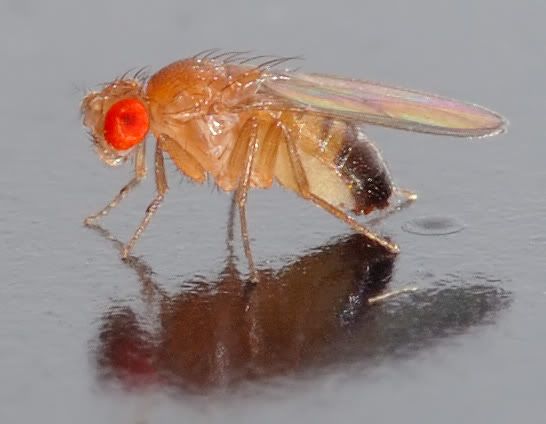
Larvae
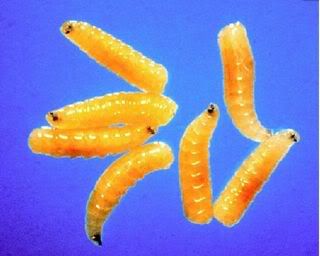
Humpbacked Flies or Phorid Flies
They look very much like fruit lfies, but if you take a closer look, you can see a hump. Apart from that, they can be recognized by the way they run around: very fast, always stopping after a short distance and very reluctant to fly. Humpbacked flies are the only insects that have been found in crabitats that can be harmfull to the crabs, at least I haven’t heard of any other. The adults and larvae can feed on almost anything including flesh, so if a crab has an open wound the larvae are able to get into the wound and eat the crab from the inside out. Some species are able to lay their eggs into healthy animals, but those are parasites of a certain species and as far as I know, no phorid fly preys on land hermit crabs specifically. To get rid of them, do a deep clean, bake or boil everything, bathe the crabs and I recommend keeping the crabs in an ISO tank that’s easy to clean for six weeks to make sure there are no eggs or larvae left. Clean the ISO every week (change substrate and hiding places, boil or bake the hiding places you want to use again) and make sure the food doesn’t spoil.
Interesting fact: Phorid flies have been known to survive by eating shoe polish – you somehow have to admire a bug that’s so adaptive
http://en.wikipedia.org/wiki/Humpbacked_Fly
http://www.puyallup.wsu.edu/plantclinic ... kflies.pdf
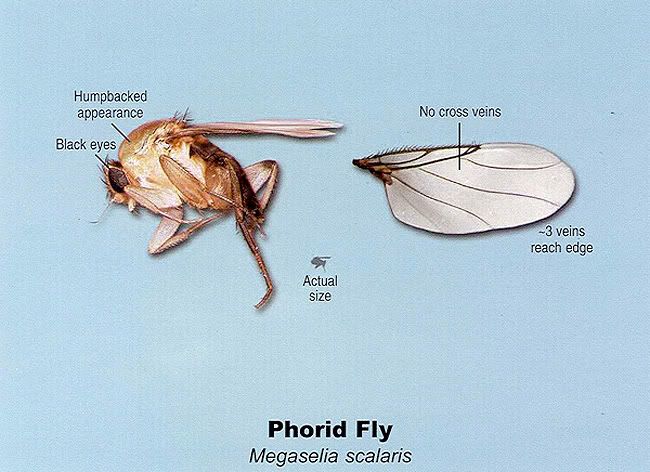
Fungus gnats
Fungus gnats are small (2,5 mm), black flies. Both the adults and the larvae feed on decaying and living plant matter, the adults eat pollen, too, and they are harmless to the crabs, but can become a pest when they multiply too much. To get rid of them, you can use yellow sticky traps. Those are sticky on both sides and can be attached to the lid of the crabitat where the crabs cannot reach them.
http://ohioline.osu.edu/hyg-fact/2000/2114.html
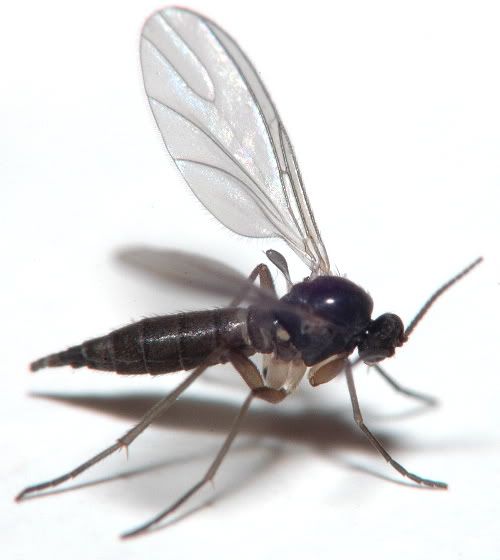
Silverfish and Firebrats
Those are rarely found in crabitats, but I will include them anyway. Silverfish are often found in bathrooms, firebrats need a high temperature to breed and are sometimes found in bakeries and other warm places. Both look similar, 1/3 to ¾ inches long and carrot shaped without wings. Silverfish are silver in colour and really look a bit like fish. Firebrats are hairy and often have dark grey stripes on their body. Both feed on almost anything at all, including cereals, fish food ect. They are harmless and won’t breed in the crabitat because it’s too humid and too cool for the firebrats and probably too hot for the silverfish, so they will disappear eventually. They mostly get into crabitats by chance.
Interesting fact: Both can survive and even thrive on a steady diet of wallpaper, tissue paper or similar things. Like springtails, they have been around for a very long time.
http://en.wikipedia.org/wiki/Silverfish
http://en.wikipedia.org/wiki/Firebrat
http://www.extension.umn.edu/distributi ... K1018.html


Ants
Ants are sometimes attracted by the food in the crabitat. To get rid of them, it’s best to find ut where they get in the house and seal their entrance. Applying a thick layer of vaseline around the top of the crabitat might help, but some ants can walk over that or build bridges. Small crabitats can be put on a baking tray filled with water. There is a type of poison that gets carried back to the nest and then fed to the queen and offsping, so that the whole ant colony will died out, this can be put down outside the crabitat. Many ants stay away from plants like garlic, but since those can also harm the crabs, they shouldn’t be used around the crabitat. It’s always useful to find out the exact species to be able to offer an attractive bait for the ants.
Interesting fact: Ant colonies make war against each other and some ant species keep other species as slaves and are totally dependent on them. Some store food in the belly of certain workers (honeypot ants), some cut leaves and grow a fungus inside their nest that can reach an impressive size, some don‘t have a nest at all, but build one every night out of their bodies as shelter for the queen and the eggs and many keep aphids or caterpillars or protect certain trees from mammals in exchange for food and/or shelter.
http://en.wikipedia.org/wiki/Ant
http://www.youtube.com/watch?v=W4s2xieF0Bs
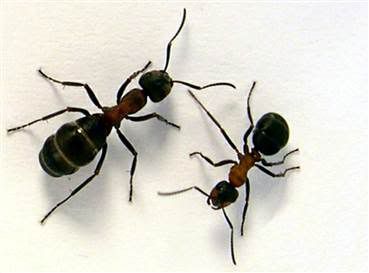
Earwigs
Earwigs are brown/black insects that reach about ½ inch as adults (this goes for Forficula auricularia, the Common or European Earwig, the species usually found in the US and Europe). They have wings, but those are hidden in a „rucksack“ on their back, actually that’s their forwings, like beetles have. They have pinchers (forceps) on their behind and those can be used for folding and unfolding the wings, mating and in self-defence, the pinch is not painful, though.
They are attracted to the high humidity inside the crabitat and feed on vegetables, fruits and rotting leaves, so they are completely harmless to the crabs. A deep clean will get rid of them.
Interesting fact: Earwigs probably got their name because people believe that they will climb into your ear and sleep their or eat into your hand, depending on the urban legend – they do no such thing of course. You can sex them by looking at the forceps: females have a straight, males a rounded pair. The females care for their eggs, cleaning them, gathering them up when the nest is disturbed ect., this is very rare with insects.
http://en.wikipedia.org/wiki/Earwig
http://www.youtube.com/watch?v=JzVTgQhQlVQ

Solitary bees
Solitary bees are bees that do not live in a hive, they build a small nest for one or a small number of eggs, provide food (pollen or paralysed insects) and then seal the nest. They don't care for their offspring like honey bees do. Some build nests in the ground, others use beetle tunnels or hollow stalks, for example elder. They are rarely found in crabitats (actually, just once to my knowledge until now) and probably like the warmth.
http://en.wikipedia.org/wiki/Bee#Solita ... munal_bees
http://www.insectpix.net/
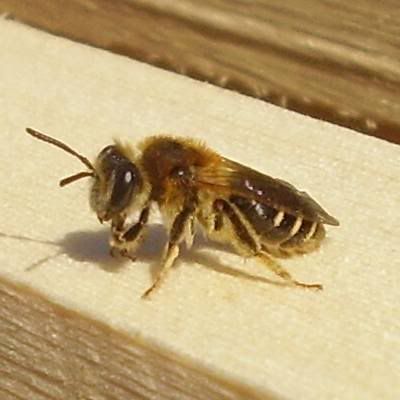
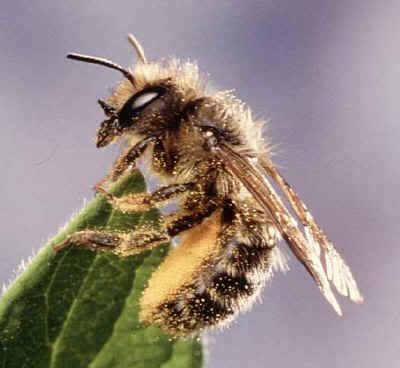
Leafcutting bee:
http://www.ext.colostate.edu/pubs/insect/05576.html
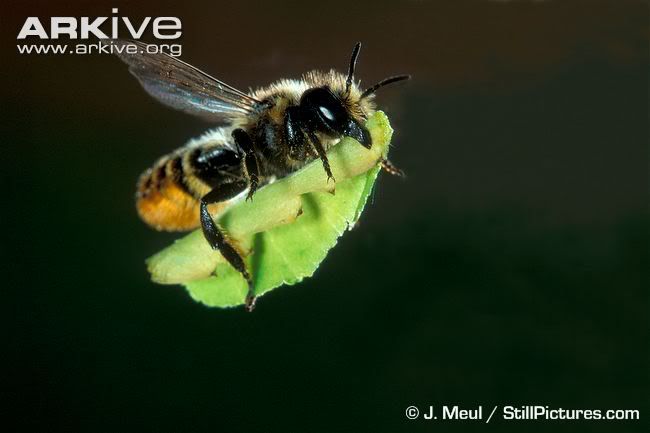
Interesting fact: Solitary bees are harmless, not aggressive at all, fascinating to watch and can be attracted to gardens and even balconies by offering them places to build their nest.
Cockroaches
German cockroaches have been found in a couple crabber's tanks. They are very common in houses, and seek out easy food and warm, humid places. They are generally a bit less than an inch long, wide, flat, and have wings (but cannot fly). They will not harm your crabs.
http://ento.psu.edu/extension/factsheet ... ockroaches
http://en.wikipedia.org/wiki/German_cockroach
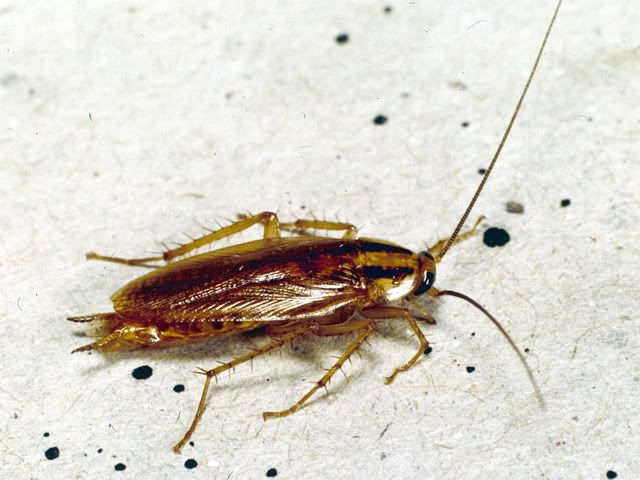
There are more insects that can be found in your crabitat, especially small flies and other tiny insects living in the soil, but those are the species that people have found very often and that were positively identified. If you find something else, try to take a picture of make a drawing so that the bug can be identified.
Nematodes
There are thousands of nematodes, and they cannot be easily identified. The terrestrial ones are soil-dwelling and can potentially be introduced to your tank from any organic matter (wood, leaves, substrate). Most will probably not harm your crabs. A deep clean will get rid of them, but be aware they may come back since they are so common in soils and organic matter outside. Different species feed on materials as varied as algae, fungi, small animals, fecal matter, and dead organisms, so they may be beneficial to your tank.
http://en.wikipedia.org/wiki/Nematode
http://entnemdept.ufl.edu/creatures/nem ... matode.htm
http://soils.usda.gov/sqi/concepts/soil ... todes.html

Arachnids
Arachnids are such bugs as spiders, scorpions, mites and other bugs related to spiders. They have two body parts, the thorax and the abdomen, no wings or antenna and eight legs.
Mites
There are thousands of species of mites and it’s extremely hard to identify them. They come in all colours (white, grey, black, brown, bright red ect.) and many sizes. Only comparatively few species are harmful for the crabs. The rule of thumb is: if you find them in the food dish or the rest of the crabitat, they are probably harmless. If you find them on the crab, especially on the joints, the abdomen or the mouthparts, they are predatory and harmfull. A deep clean will get rid of the harmless mites, for the predatory ones you will need to bathe the crabs in salt water or you might even need to pick off the mites because they have claws on their legs to hold onto their prey.
There’s a certain species of mites that are often found in insects breeding containers, for example when breeding roaches or fruit flies. They feed on vegetables and fruits and are harmless, but their population can literally explode in a few days and then they are a real pest. They look like walking grains of sand, white to yellow and are about 1 mm long, I call them food mites because that’s where they often appear in the crabitat. A deep clean will get rid of them, too.
http://en.wikipedia.org/wiki/Mite
Interesting fact: Some mites feed on pollen and hitch rides with hummingbirds, racing up the beak and then down again into a new flower. Others hitch rides with flying insects to reach new plants and some not only hitch a ride, but also s*u*c*k the haemolymph (insect blood) on the insect that’s carrying them. Many species change their dietary habits depending on their age.
Video of commonly found food mite: http://www.youtube.com/watch?v=k7FsDnr8n98
Mite photos (first pic are food mites):
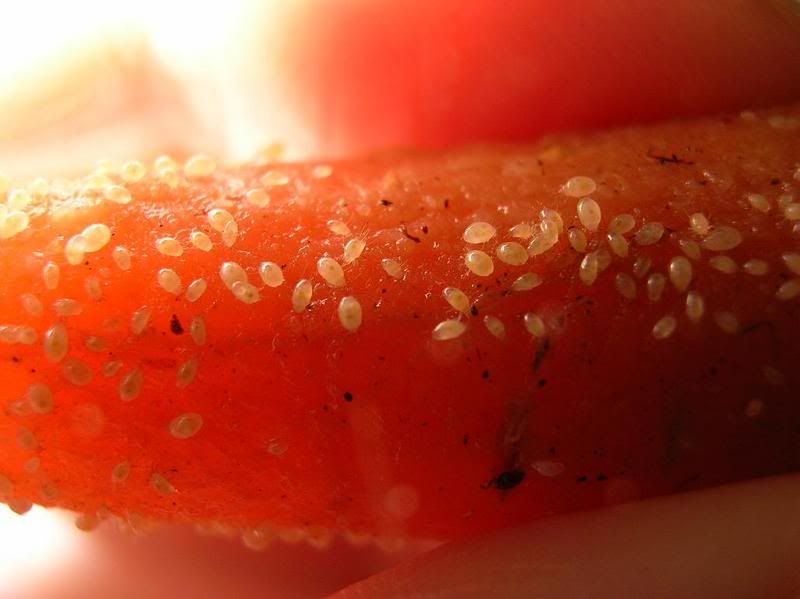
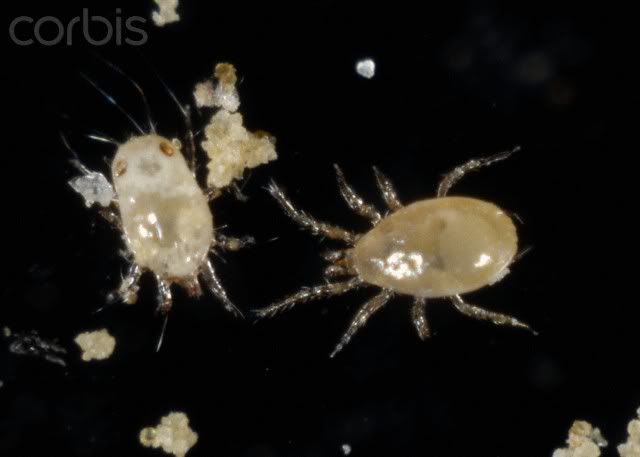
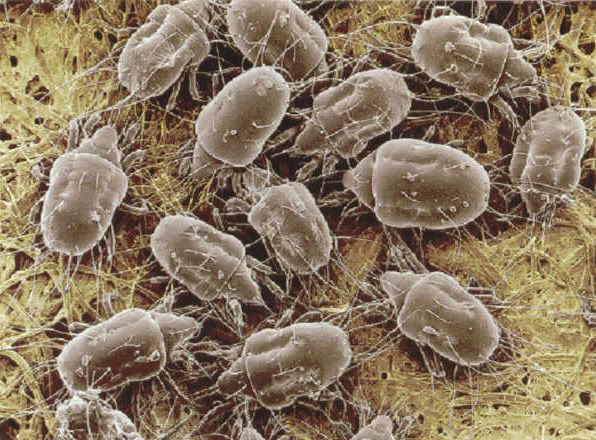
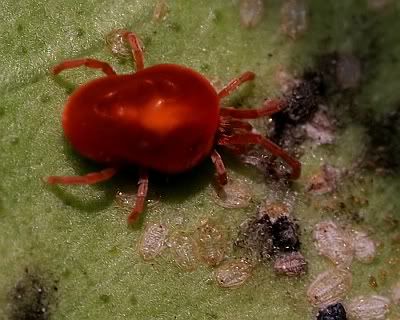
Bookscorpion or Pseudoscorpions
A rare guest in crabitats that sometimes comes with moss or leaf litter is the bookscorpion. They look like tiny (1-4 mm) scorpions, but have no tail and are absolutely harmless unless you are a springtail or a fruit fly.
Interesting fact: One species, Chelifer cancroides, does live in books and this species gave the whole order its name.
They dance with each other during mating and they build a small nest from grains of sand, moss and silk. The females produce a nourishing substance for their babies, so in a sense they nurse their babies.
http://en.wikipedia.org/wiki/Pseudoscorpion
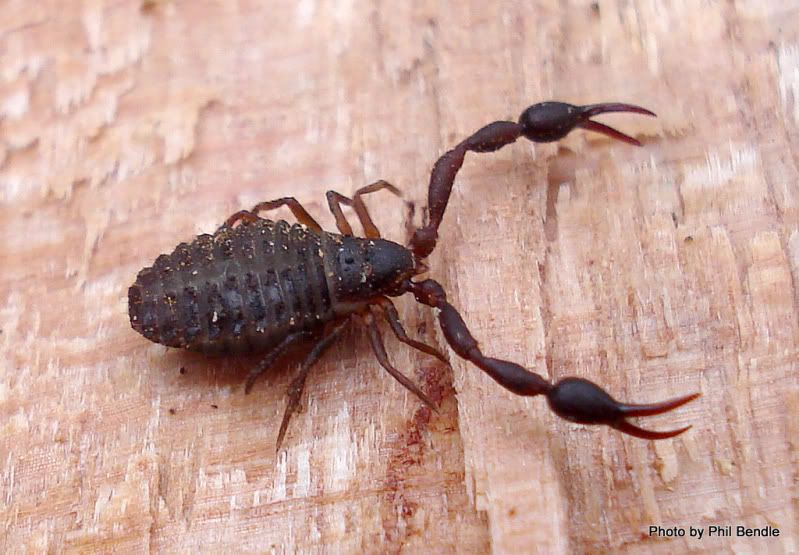
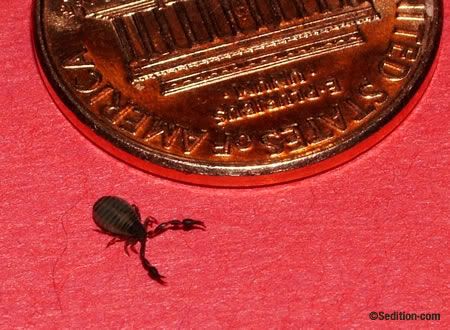
Other bugs you might find
Woodlice/terrestrial isopods
Woodlice, also called pillbugs, sowbugs or rolypolys, are the only crustaceans that live permanently on land without any contact to water. They need a humid atmosphere to breathe, that’s why they are sometimes found in crabitats. Woodlice are harmless and feed on decaying plant matter. They are often used as tank cleaners with reptiles, phasmids and other animals. They make great pets, too!
http://www.inhs.illinois.edu/inhsreport ... opods.html
http://www.youtube.com/watch?v=QeufyNGeKhQ
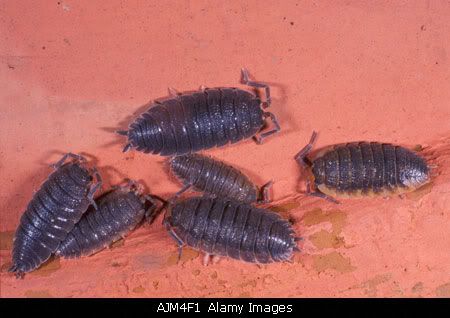
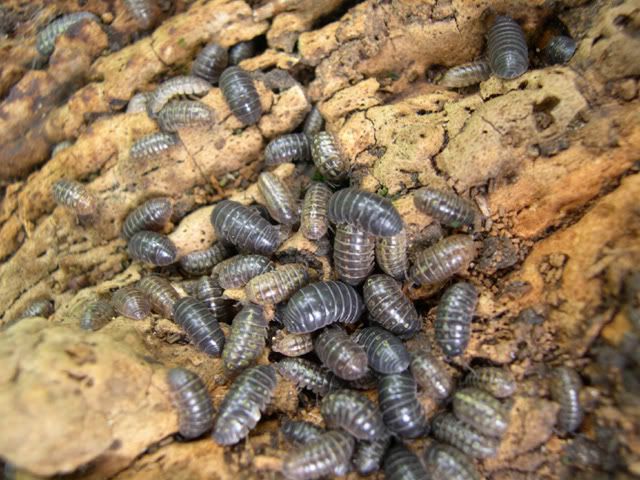
Millipedes and Centipedes
Both belong to the Subphylum Myrapodia (this means “numerous feet”) of the Phyllum Arthropoda (“joint-legged”), which insects, arachnids and crustaceans belong to, too. Millipedes (“with a thousand feet”) have two legs on either side per body segment, centipedes (“with a hundred feet”) only one. They sometimes turn up in crabitats and come from moss, leaf litter or with live plants. Millipedes are vegetarians that feed on decaying plant matter, centipedes are predators. The centipedes you might find in your crabitat are very small and are no danger to the crabs.
Interesting fact: Millipede males of some species can breed only after every second molt.
http://en.wikipedia.org/wiki/Centipedes
http://en.wikipedia.org/wiki/Millipede

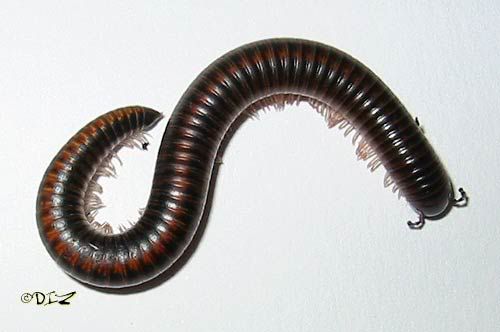
Bugs that help getting rid of other bugs
You can purchase predatory mites or insects that will feed on some bugs in your crabitat and then die when they find no more prey. This is a efficient and absolutely crab-safe method to get rid of bugs, without stressing the crabs by doing deep cleans ect.
Here’s one website that offers such bugs:
http://store.evergreengrowers.com/prost ... etail?no=1
Some crabbers have used the predatory mite Hypoaspsis miles. It’s very effective because it will eat anything that is the right size and not just one or two species of other mites. Hypoaspsis miles will probably stay even after all mites are eaten because they can feed on algae and plant matter when there’s no prey around. That way, another infestation with unwanted guests is prevented.
http://www.entomology.wisc.edu/mbcn/kyf302.html
